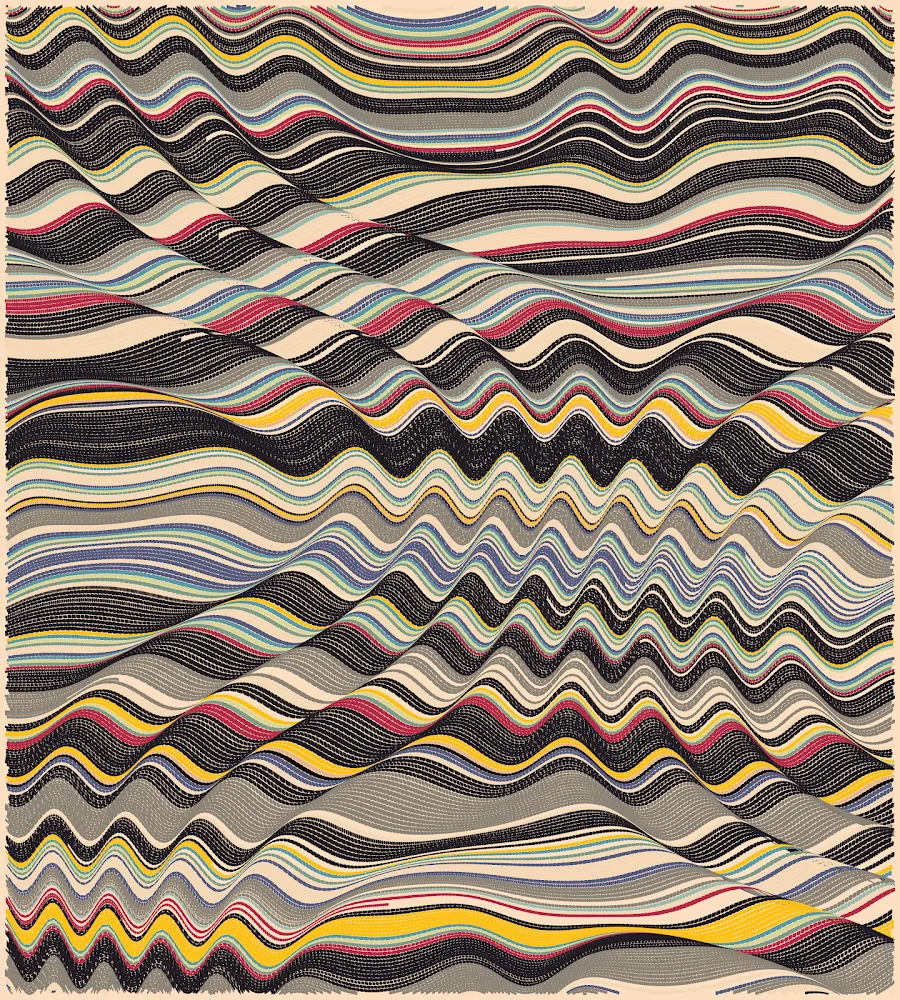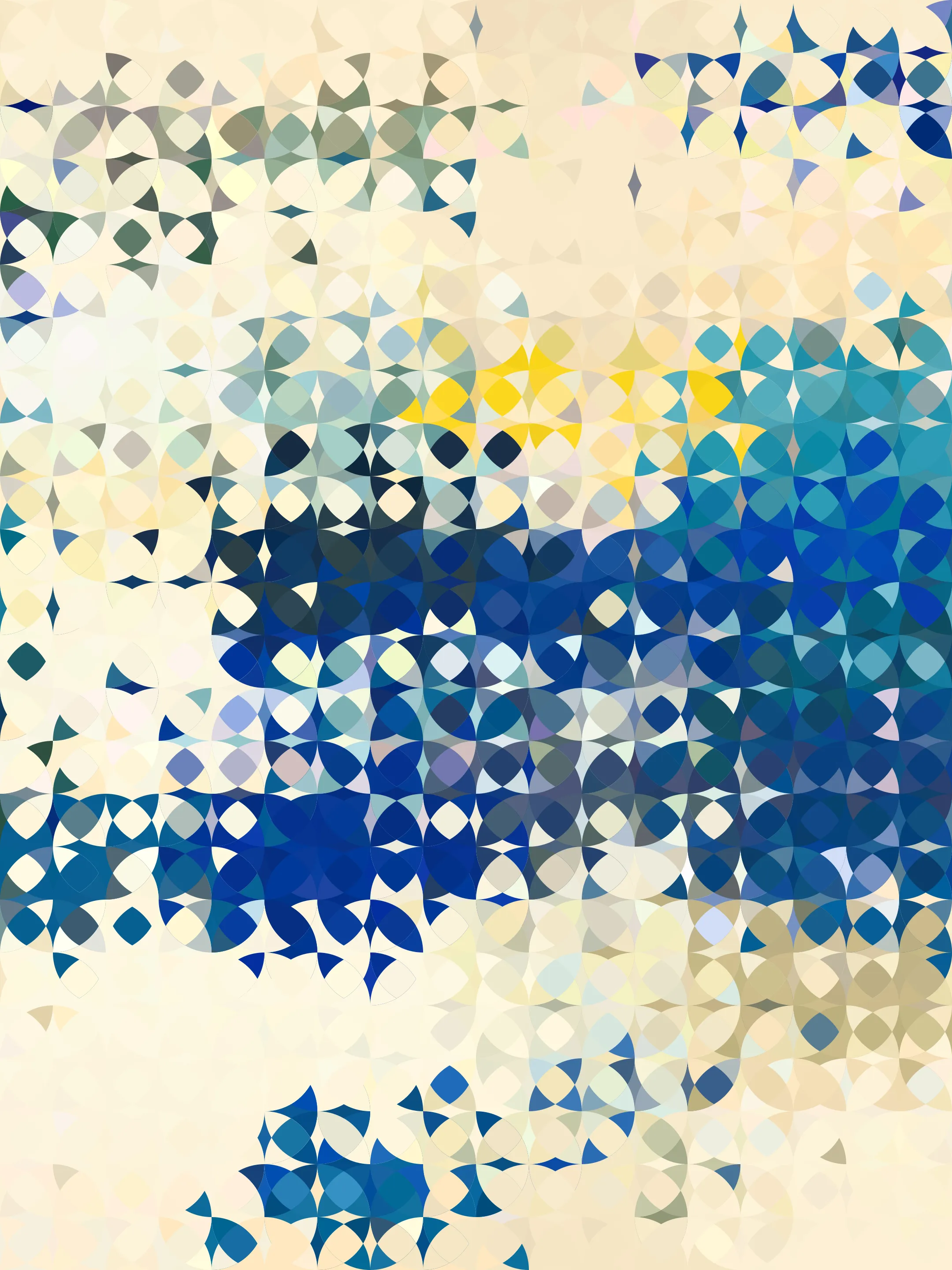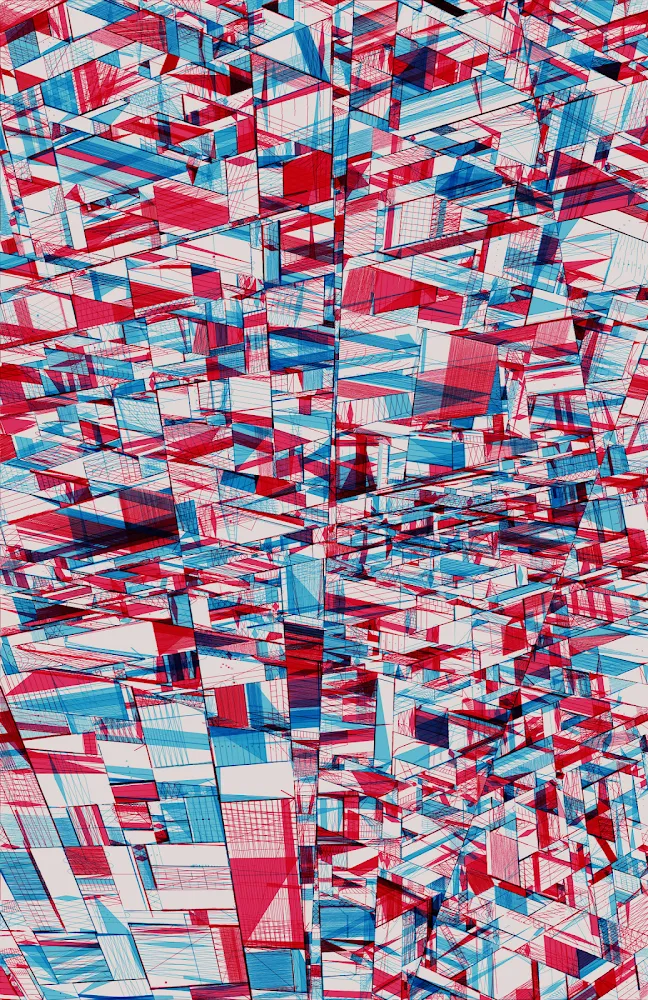Subscribe to get the latest on artists, exhibitions and more.
Finding Flow State with Ben Kovach

Leyla Fakhr: Do you have diverse points of inspiration in your life? Are there for example any particular artists (living or dead) or artworks that inspire you?
Ben Kovach: I draw a lot of inspiration from music. Everything from classical piano to heavy progressive metal. I used to play the drums a lot and rhythm influences what I do in the visual realm as well. I'm inspired by elegant mathematical concepts and algorithms (e.g. PageRank), and especially generative algorithm design (e.g. Tarbell's substrate). From a visual standpoint, there are tons of artists I look to for inspiration. Lately I've been viewing Gego's printmaking work often. I recently saw a local exhibition of Maria Shell's beautiful quilts that stuck with me. It's hard not to get inspired from stuff like that.

Leyal Fakhr: You mentioned in an interview that, while you were drawn to being an artist early on in your life, you found your art classes in university really 'uninspiring and creatively draining' prompting you to switch to computing. Why was that?
Ben Kovach: In retrospect, I think that my high school art teachers were absolutely top-notch. I remember a diverse set of assignments, lots of constructive critique (from peers and teachers), and strong encouragement to push boundaries and explore when I was a teenager. In many ways, I have them to thank for where I am today. My early college courses, in contrast, were graded on cleanliness and progressed way too slowly for me. I got bored and wasn't having fun. I was doing poorly in a color theory class where all of the assignments involved painting a clean grid of nice, solid colors when I decided it wasn't for me. I took a step back and started doing some creative problem solving with code. Perhaps surprisingly, this felt much less restrictive than my art courses, and I felt free to explore again.
Leyla Fakhr: Was there a moment when you realised you were an artist? Did you feel different?
Ben Kovach: I knew I would be an artist, in some capacity, since I was a kid. I feel like an imposter sometimes just like everyone does, but usually that feeling is targeted towards entrepreneurial side of art-as-a-business. I like making stuff. In that sense, everything is the same as it's always been and I’ve always considered myself an artist.
Leyla Fakhr: What is your working process like? Do you work during the day or night? Both?
Ben Kovach: To be honest, I'm all over the place. Every day is different. So, I just fit it in whenever I can. I'll render outputs while I'm cooking breakfast or watching TV in the evening. I'd say my best, most creative work is usually done extremely early in the morning. I'm most productive on the days when I convince myself to wake up at 4 AM and get to work while it's still dark and quiet.
Leyla Fakhr: What do you think is the secret ingredient to becoming a successful generative artist?
Ben Kovach: It would be foolish for me to prescribe a one-size-fits-all solution here. But I think that no matter what, persistence has got to be a big part of it. I have 5 years of algorithms sitting in my codebase that I can pull from for new work. It took a lot of effort to build up that toolkit and it has to keep growing for my work to evolve. It's not a Herculean task for me - I enjoy this type of work - but it takes dedication to push through and keep building at times.
Leyla Fakhr: Do you think generative art is understood in the more traditional art realm?
Ben Kovach: I have to imagine there is still a lot to be learned. Many people still don't really understand what coding is. Generative art is a fresh topic in the traditional art world and I'm hopeful that the ideas will continue to be more widely understood over time.
Leyla Fakhr : What is your relationship with code? Is it an endpoint or is it a starting point?
Ben Kovach: I tend to think in systems and rules, though not necessarily code. I start with a general idea for a system along with a hypothesis for how that system might behave (and what its output might look like). These ideas are often informed by other artworks or visual sources, but are just as often informed by my background in creating algorithms. To give an example, say I want to draw a circle, but make it "wobble" a little bit, to mirror the natural disturbances in the real world. Immediately I'm thinking in terms of my own tools. Generate N evenly spaced points around the circle. Displace them in some way, maybe normally distributed in 2D or pushed around with some backing force field. Take the points and run them through a polygon smoothing algorithm and trace the path. I'm not thinking in code per-se, but I think in abstractions like this that I've built up over time.
Leyla Fakhr: What do you find most challenging about being a generative artist?
Ben Kovach: Defining an individual style is a struggle for all artists, but I think it's particularly difficult in generative art. The best generative artists out there use tools they've specifically crafted for themselves, which in turn "flavors" their work in some way that makes them hard to replicate. Highly customized algorithms and thoughtful drawing routines are the X factor that adds character to much generative artwork, but these details are often non-obvious to the observer and require careful consideration on the part of the artist. My advice to aspiring generative artists on this front would be to use as little of your drawing library's API as possible and build out your own functions instead. Those functions are precisely what will give your work a unique charm.
Leyla Fakhr: What do you think about physical shows for generative artists?
Ben Kovach: Generative artists are artists - they can and should be represented in physical shows just as much as any other artist(s). I think special care must be taken around the display of digital art in general, but there are lots of solutions for that. I would be remiss if I didn't mention my solo exhibition 100 PRINT here, where I had 100 generative works printed and framed in Bright Moments' Soho gallery in New York. I took this route for many reasons, a major one being to engage viewers with the depth of display that print can provide. If a still generative work can be printed, usually that is the best way to view it, in my experience. In any case, by all means, generative artists should be invited to do physical shows - we're artists just like any other.
Leyla Fakhr: How do you deal with the pressure in the Web 3 space? Do you find it hard to set boundaries and find time?
Ben Kovach: It can be overwhelming. I don't use social media on my phone any more, which helps balance web3 stuff with everyday life. Things move quickly and I try not to be too upset when I miss events and drops etc. It's impossible to catch everything, and that's okay. I recognise social media as a distraction from my more satisfying work (making art) and try to limit it as such.
Leyla Fakhr: How do you work with the element of randomness of the medium within your work?
Ben Kovach: This all leads back to thinking algorithmically, about systems of design over individual works. It's not uncommon for me to have an "example" in mind when I start designing a new algorithm, but as soon as the idea is born, I'm thinking about how that example can be generalized or abstracted to produce a system capable of creating similar works. I like to think about entire bodies of work as a whole, and how the commonalities within them might be encoded. An easy example to give is Mondrian's Compositions, where the primary colors are speckled in a gridded painting. It's fairly easy to represent variations of those works in code. Escher worked with multiple perspectives within a single work, and deconstructing this idea to choose multiple perspectives at random was the basis for 100 PRINT. Random generation, wielded with skill, can turn one work into a whole series, which is pretty incredible when you think about it.

Leyal Fakhr: Where do you define your art? In the code or in the output?
Ben Kovach: I don't publish most of my code. Usually it's a big mess. I think the algorithms driving the works are interesting though, and like to talk about them when I get the chance. Sometimes I write about my work on my website and give conference talks. I'm generally happy to talk about my process at a technical level. A lot of the fun for me is in designing algorithms.
Leyla Fakhr: You recently shared your generative works over the past 5 years. How do you find your different series have varied over the years? While they seem continuously rooted in abstraction and perspectives, would you say they have matured into a smoother rhythm? Has there been one series that you have found more stimulating to work on?
Ben Kovach: Art, for me, means constant exploration. I've done curated series large and small, 1/1s, conceptual work, and big long-form stuff. I think that being an artist has afforded me a lot of freedom in what I choose to work on, so I try not to box myself in with a single style too much. Early on, my work tended to be on the maximal end of the scale. As time has gone on, I've really tried to focus on the minimal aspects of my work, even when the works as a whole are noisy and chaotic. Nowadays I try to build interest in every possible subdivision of my work instead of focusing on the zoomed-out, full piece. All that said, there are fragments of prior work in almost every new series I work on. I think that is inescapable. I would say that my rhythm is set pretty well once I get going on a project, or during daily sketch times. However, there's still the occasional chasm where I'm trying to define a concept for new work and trying to figure out that rhythm. I remember working on 100 PRINT for several months with nothing to show for it, but slowly over time I hit a stride and the work began to evolve. All of my published works have gripped me in different ways over the course of their development. To answer your question more directly, I loved the very early days of 100 PRINT where I was just putting the perspective pieces together; that whole exercise was a lot of fun and I'd love to revisit it at some point.

Leyla Fakhr: Last but not least, what are you looking forward to next?
Ben Kovach: Without saying too much, I have some pretty cool collaborative work coming up that involves an external data source. I'm taking things slowly for now, but quietly plugging away on this experimental work and meandering through various smaller projects. Less on the artmaking side, I'll be in Marfa for the Art Blocks event in November, and I'm very much looking forward to meeting some friends and collectors I've known online for many years at that event.
Ben Kovach is a visual artist who designs algorithms that create art. His goal is to create artworks that feel natural using code. He has released two large generative art collections, Edifice and 100 PRINT, through Art Blocks. He currently lives in Vermont with his wife and daughter.
Leyla Fakhr
Leyla Fakhr is Artistic Director at Verse. After working at the Tate for 8 years, she worked as an independent curator and producer across various projects internationally. During her time at Tate she was part of the acquisition team and worked on a number of collection displays including John Akomfrah, ‘The Unfinished Conversation’ and ‘Migrations, Journeys into British Art’.
She is the editor...
Ben Kovach
Ben Kovach is a visual artist who designs algorithms that create art. His goal is to create artworks that feel natural using code. He has released two large generative art collections, Edifice and 100 PRINT, through Art Blocks. He currently lives in Vermont with his wife and daughter.



